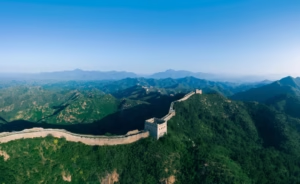Amarnath Temple: Lord Shiva in the Heart of the Himalayas

The Amarnath Cave Temple, nestled in the towering Himalayas of Jammu and Kashmir, is one of Hinduism’s holiest shrines. This sacred site, known for its naturally occurring ice Shiva Linga, attracts lakhs of devotees annually during the Amarnath Yatra. Rooted in mythology, framed by geographic wonder, and layered with cultural and spiritual significance, Amarnath Temple is not just a place of worship—it’s a pilgrimage of transformation.
Historical and Mythological Background
The Legend of Immortality
According to Hindu mythology, Lord Shiva chose the remote Amarnath Cave to reveal the secret of immortality (Amar Katha) to Goddess Parvati. To ensure privacy, he abandoned all companions, including Nandi (his bull) and Ganesha (his son), and chose the isolated cave as the sacred spot. It’s said two pigeons overheard the story and became immortal, and are occasionally seen near the cave to this day.
Historical Mentions
The cave has been mentioned in ancient texts such as Kalhana’s Rajatarangini (12th century CE). The first documented modern rediscovery is attributed to a Gujjar shepherd, Buta Malik, in the 15th century. According to local lore, he was handed a bag of coal by a sage, which turned into gold—leading him to the cave.
Religious Significance
The Ice Shiva Linga
The central miracle of Amarnath is the Shiva Linga formed naturally by freezing water droplets that trickle down the cave’s roof. This ice stalagmite is believed to wax and wane with the phases of the moon. Two smaller formations beside it are considered representations of Parvati and Ganesha.
This natural phenomenon reinforces the cosmic symbolism of Lord Shiva—the destroyer of time and the transformer of spiritual energy.
The Amarnath Yatra
Every year, in the Hindu month of Shravan (July–August), hundreds of thousands of pilgrims undertake the Amarnath Yatra—a rigorous trek to the cave shrine. The journey is considered to be a test of devotion, discipline, and endurance, believed to cleanse one of sins and earn spiritual merit.
https://sypertimes.com/guru-purnima-honoring-the-eternal-light-of-knowledge
Geographical Features
Location and Terrain
The Amarnath Cave Temple is situated at an altitude of 3,888 meters (12,756 feet) in the Lidder Valley, about 141 kilometers from Srinagar, the capital of Jammu and Kashmir. It lies within a narrow gorge, flanked by snow-capped peaks and glaciers, near the Amarnath Glacier.
The cave itself is located in the Anantnag district, in the Himalayas’ Zanskar Range.
Environmental and Climatic Conditions
The area is marked by alpine tundra, steep cliffs, sub-zero temperatures, and unpredictable weather conditions. The climate is extremely cold even during summer months, with snow persisting year-round around the cave area. The region’s fragile ecology has led to growing concerns about the impact of mass pilgrimages, leading to environmental protection measures.
The Shri Amarnathji Shrine Board enforces eco-friendly policies, such as biodegradable waste management, RFID tracking of pilgrims, and medical support throughout the route.
Physical Dimensions of the Cave
- Cave Width: Approximately 40 meters
- Cave Height: Roughly 40 meters
- Ice Lingam Height: Varies seasonally, can reach up to 10–12 feet during peak
The Shiva Linga is formed through a process similar to stalagmite formation, fed by dripping water from the roof of the cave that freezes due to the low temperatures inside. The symmetry and timing of the lingam’s growth with the lunar calendar have fascinated scientists and spiritualists alike.
Modern Challenges and Controversies
Security Concerns
Given its location in a politically sensitive region, the Yatra has faced terrorist threats and attacks, including major incidents in 2000, 2001, and 2002, claiming dozens of lives. Since then, heavy security has been deployed annually, including CRPF, army personnel, and surveillance systems.
Environmental Concerns
The rapid increase in footfall (over 600,000 pilgrims in some years) has raised alarms about the degradation of Himalayan biodiversity. Glacial retreat and water contamination are growing threats, prompting demands for a cap on daily visitors.
Management and Pilgrim Support
The Shri Amarnathji Shrine Board (SASB) manages:
- Route maintenance
- Medical camps
- Langars (free kitchens)
- Permits & RFID-based registration
- Emergency evacuation (via helicopter)
The Yatra Permit System ensures regulated entry, and online registration with health certificates is mandatory. Special quotas are maintained for senior citizens, women, and differently-abled pilgrims.
https://www.thehindu.com/news/national/amarnath-yatra-news-on-july-9-2025/article69790326.ece




